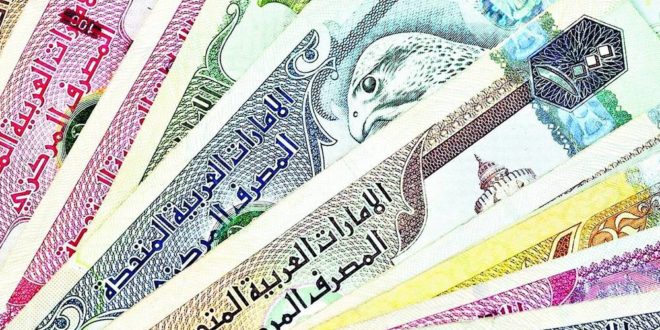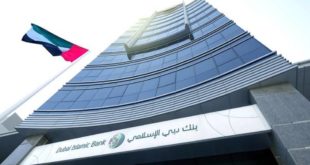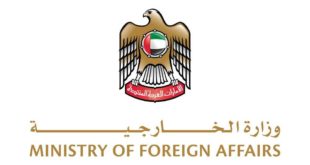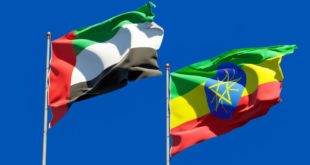A recent report by “S&P Global” on the vulnerability of Gulf banks to financing risks and mitigating factors indicated that “financial risks are among the most prominent concerns among investors in Gulf banks, especially as we move from cheap and abundant liquidity to an environment in which access to liquidity is increasingly restricted.” .
The report indicated that “major central banks had clearly announced that interest rates would be higher for a longer period, which means that liquidity would be scarcer and more expensive, and this could greatly affect banking systems in emerging markets.”
And “S&P” revealed that “Emirati banks enjoy a comfortable position for net foreign assets, and their loan-to-deposit ratios are among the strongest in the region,” noting that “banks have collected local deposits over the past 15 months in light of the small growth of lending.” .
And she continued, “We do not expect an acceleration in lending, so we expect the financing conditions of UAE banks to continue to improve.” And she pointed out that «one of the potential risks for banks is the dominance of expatriates over the demographics in the country, and this means that deposits may be subject to more fluctuations during severe crises, although they were mostly stable during previous crises».
“In addition, the country is considered a safe haven, so geopolitical instability in the region and beyond is often reflected positively on it through an increase in local deposits,” she said. And I expected that “the federal authorities will be very supportive of the banking system, if necessary.”
She pointed out that «in the absence of domestic growth, banks increased their assets outside the country, which led to a strong net asset position amounting to about 23% of local lending, and to mitigate the related risks, these banks follow a relatively conservative approach towards investing in foreign assets». S&P also expected “this situation to moderate in the future, if lending growth witnesses another recovery.”
Qatari banks
With regard to the financing conditions of Qatari banks, she revealed that “Qatari banks are the highest resort to external financing among Gulf banks,” noting that “the ratio of loans to deposits in the banking system amounted to 124% on March 31, 2023, or 152% on the same date if We took into account residents’ deposits and loans only.”
She added, “This resulted in a financing gap that amounted in total (total domestic loans minus total residents’ deposits) to $112.4 billion, which is almost double public sector deposits.”
And she pointed out that “although Qatari banks benefit from the geographical diversification of financing, some of these external sources are less stable,” explaining that “on March 31, 2023, nearly two-thirds of the domestic financing gap was covered through capital markets and dues.” Branches and head offices, while the rest was covered by interbank deposits, which we see may be more volatile, and we also note that the contribution of this source has increased over the past 15 months, to reach 217.5 billion Qatari riyals on March 31, 2023, compared to At 164 billion Qatari riyals at the end of 2021.
And she stressed that “the Qatari government greatly supports its banking system and its strong record of providing such support is a mitigating factor. For example, the banking system lost about $20 billion in external financing in 2017, but the banking system was able to compensate for that with more.” Twice the amount lost through government deposits and deposits from government-related entities.
In light of the scarcity of global liquidity and its increasing cost, S&P expected that “Qatari banks will continue to mobilize domestic resources to meet future growth.” And she continued, “However, we do not expect a significant recovery in this mobilization. The government is implementing a new major investment program.”
Saudi and Kuwaiti banks
Regarding the financing conditions of Saudi and Kuwaiti banks, she indicated that “financing risks are low for both banking systems,” pointing out that “basic customer deposits dominate the financing conditions of banks in these two banking systems, and these deposits have proven to be flexible and stable during periods of geopolitical instability.” Or lower oil prices, part of which comes from national governments and their associated entities, 20% in Kuwait and 30% in Saudi Arabia.
And she added, “In Kuwait, the ratio of loans to deposits reached 96.9% on March 31, 2023, and in Saudi Arabia it barely exceeded 100% on the same date.” And she continued, “Although we have noted some liquidity pressures in the Kingdom of Saudi Arabia, the Central Bank, in our opinion, will continue to intervene when needed to ease the situation.”
And she expected, “The banking system will replace mortgages from the balance sheet, to make way for financing the Kingdom’s Vision 2030 projects, with the possibility of resorting to capital markets as a possible alternative, albeit at a higher cost,” noting that “many Saudi banks have been established over the past 12-24 months.” Its own sukuk or bond programs to take advantage of the market when the opportunity arises.
She pointed out that “Saudi and Kuwaiti banks are still in a position of net foreign assets, and therefore have room to attract foreign financing,” explaining that “the Saudi riyal’s link to the US dollar and the relative stability of the Kuwaiti dinar exchange rate thanks to its link to a basket of currencies means that, even if it is recycled.” This inflow domestically, foreign exchange risks are likely to remain under control.
She said, “The total foreign liabilities of Saudi banks have almost doubled over the past five years, but the level of their net assets has remained stable.”
Bahraini banks
With regard to the financing conditions of Bahraini banks, “S&P” indicated that “Bahraini retail banks (internal banks) have large and growing net external liabilities,” noting that “on March 31, 2023, it reached
 Media ININ Economy We Trust
Media ININ Economy We Trust








